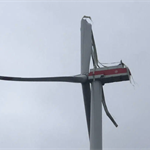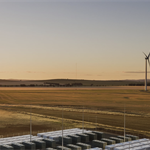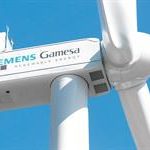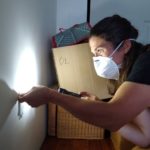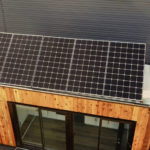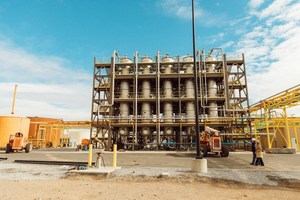Avoiding Unplanned Shutdowns due to Piping and Duct Failures
Energy Disrupter
Addressing common issues related to piping and ducting systems can prevent unplanned downtime and increase overall biomass plant efficiency.
ADVERTISEMENT
K eeping a biomass or biorefining plant operating efficiently is a delicate science. Nearly every piece of equipment in operation has the potential to bring the entire plant offline if it fails, and is usually complicated to understand in its own right—let alone understanding the intricacies of the way it interacts with the adjacent systems in the plant. Thankfully, piping and ducting systems are simple, straight forward, and don’t ever bring our plants offline—right?
Undergoing an unplanned shutdown because of a failure in your piping or ducting system is embarrassing. Sure, the ductwork, like a network of veins and arteries, ties everything together, but it’s more of a peripheral feature. Ductwork is not the core equipment that the whole plant runs on—it’s just a system connector—so there is little grace for plant managers who experience a ductwork failure, and even less for maintenance managers who didn’t see it coming. King Solomon said, “There is nothing new under the sun,” and this applies to biomass plants as well. Technology has come a long way in the past 40 years, but our field experts have consistently found the same telltale signs of imminent piping and ducting failures. Watch for these, and you can avoid an unplanned shutdown.
Hidden Leaks
Water pooling on the ground, corroded structural steel, plumes in the air—we all know the signs of positive pressure leaks, and we know we have to fix them fast to avoid all kinds of damage, safety issues and environmental hazards. But what about negative pressure leaks? They’re just as detrimental in the long term, yet we tend to overlook them. Out of sight, out of mind, right? A negative pressure leak means ambient air is being sucked into the system; what’s doing the sucking? Your induced draft (ID) fan. If the ID fan is pulling in ambient air, it’s pulling in less process gas or using more electricity—both things plant operators hate. So, let’s talk about that ambient air: It’s wet. Even in dry environments, the average relative humidity is still significant, causing unseen leaks to bring moisture into the biomass gas stream, creating unintended issues in unexpected places. This will exhibit itself in the following symptoms.
- Slow drips or crystalline deposits running from beneath insulation or from gaskets and expansion joints.
- Loss of fan capacity (or becoming ID fan/blower limited in worst cases).
- Internal corrosion in vessels and equipment.
- Elevated oxygen process gas levels.
As for hidden leak points, the most common include the following.
- Fabric expansion joints that have outlived their useful life.
- Fabric expansion joints that have not been properly spliced.
- Holes in ductwork that are hidden beneath insulation.
- Loose flanges or equipment connections.
- Equipment doors/manways upstream (dry gas area).
- Expansion joints that have been insulated over but undocumented.
Low Points
We’ve discussed how the condensation and precipitation got into your ducting system, so now, how does it get out? Liquid seeks the lowest point in piping and ducting systems. This often occurs near elbows, in the bottoms of vessels, or in the convolutions of horizontal expansion joints. If you have a sagging area in ductwork or a low elbow or bend, you may need to install a drain to tap this excess moisture off into a sump until you can properly level the system at the next major shutdown. However, if it’s in a metal bellows expansion joint (common across large-diameter ductwork in biomass plants), you may need to find a solution for the pooling liquid. The following are possible solutions.
- Externally insulate the expansion joint (check to verify metallurgy and acceptable temperature first) to bring everything above dew point.
- Change the metallurgy to something that can handle the excess moisture and continue to last between shutdowns.
- In certain circumstances, you may be able to add a drain to the bottom of a “heavy wall” single convolution expansionjoint.
- Upgrade to two-ply designs with a monitoring system that will alert operations when the inner ply fails, so a routinemaintenance system can be developed.
- Add either steam or electrical tracing to increase the bellows temperature above dew point.
Metallurgical Corrosion
Carbon steel, high-nickel alloy, fiber reinforced plastics, thermoplastics—you’ve seen it all, and you know what you like to use. You probably have a specification for the type of steel you want to see in your piping and ducting systems, and it’s probably followed fairly well. Here’s where things sneak up on you, though: your piping and ducting accessories. Does your pump vendor know that you want the flanges to be made of 316L to match the adjacent piping? Does your expansion joint vendor know that his T304 metal bellows are getting welded onto carbon steel? Does your damper manufacturer build his shaft packing glands to the same spec as your ductwork? You can end up with a slew of different pieces of equipment in your system, and it’s hard to vet them all first. Obviously, you would prefer to change any piece that has an incompatible metallurgy out for an upgraded one, but sometimes you can’t afford the downtime or upgrade cost. As for what to do if ductwork accessories are corroding and you can’t come offline:
- Determine if the part is acting as a heat sink and dropping the process gas within below dew point.
- Determine if the area upstream is airtight or if there are any major infiltration points contributing to the issue.
- Check metallurgical compatibility between accessory and adjacent ductwork.
- Take UT (ultrasonic testing) readings to determine corrosion rate and projected lifespan.
- Perform thermal scans to look for hot and cold spots or potential failure points.
By addressing these common issues related to piping and ducting systems, operators can avoid unplanned shutdowns and increase the overall efficiency of their biomass plant or biorefinery. Keep an eye on these warning signs and implement the necessary preventative measures to ensure smooth and continuous operation.
Author: CJ Horecky
Executive Director, Interep Inc.
www.interep.com
[email protected]
PRINTED IN ISSUE 2, 2023 OF BIOMASS MAGAZINE


